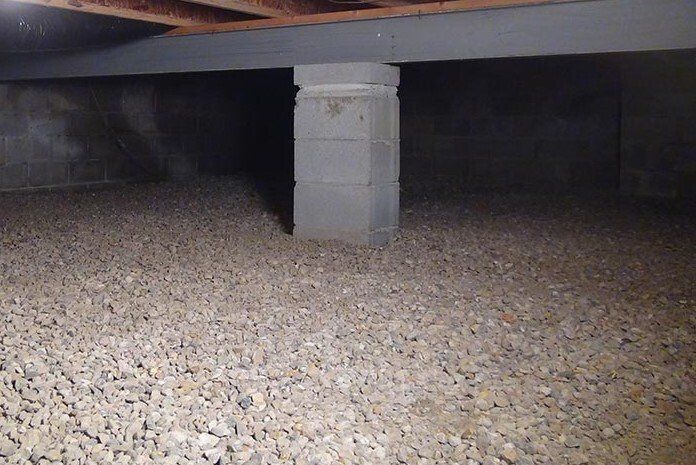
Simple Tips for Maintaining Your Crawl Space
If your house is on a crawl space, there’s some things to keep in mind to keep it dry and to keep your house healthy. Crawl spaces keep your house off the ground and create an ambient air space which, if maintained properly, will help keep your house healthy and happy. There are a number of factors that affect the condition of a crawl space, which is why it’s important to keep an eye on it and make adjustments as needed if you start to see any problems.
Crawl spaces need to be monitored and vents opened and closed certain times of year depending upon temperature and humidity. As a general rule, they should be open in late spring and closed in the fall.
Every lot is different and the ground conditions of your lot are what affect the conditions of your crawl space, and ultimately, the health of your house. Conditions, such as the level of ground, slope, ground water, moisture levels, humidity, ventilation, drainage and grading all play a key part in how much, if any, attention your crawl space will need.
1. Keep Moisture Out
Moisture control is your top priority. The ground beneath and around your home contains moisture, which ideally, should evaporate back into the atmosphere. When this fails to happen, the moisture can collect into visible water droplets. But the real problem happens when this water accumulates, causing mold and mildew to grow and causing your insulation to get wet. If left alone, the moisture and mold have to be remediated or it will impact your entire house. This problem doesn’t occur because you built a house or even how the house was built, it occurs because your ground is prone to dampness or wetness, and/or the moisture levels weren’t controlled by adequate ventilation or dehumidification.
Good moisture control begins outside. Directing water away from your house’s foundation can work wonders. The final grade requires that soil be sloped from the foundation outwards ten feet and that there be about a 6” difference from the foundation to the 10’ mark. This slope may settle over time, so maintaining at least some pitch, will help uninvited rain water from entering your foundation.
Most often, when water enters your crawl space, it’s coming up from the ground. Not through the walls and not typically from run-off above ground. That’s why regular inspection of your crawl space and maintenance of your sump pump, if you have one, and vapor barrier are key.
2. Inspect and Protect Your Crawl Space
- Open and close your vents the right time of year. Typically, close them in October and open them in May. The dryer the weather, the better.
- Check that your sump pump is operating properly. Each spring and fall, run your garden hose into your sump pit and make sure the pump kicks on. If it does not, check the power source, and check to see if any debris got stuck in it or if the float is stuck.
- Check that your vapor barrier hasn't moved or isn't damaged. This will allow ground moisture to be released into the air above.
- Check that there are no signs of critters accessing your crawl space. If they can enter, they may damage your insulation and the vapor barrier. Keep you crawl space door closed and latched.
- Check the condition of your floor’s insulation (It’s the ceiling in the crawl space). If it’s wet, you have a moisture problem and you may need a dehumidifier and/or a humidistat to monitor the moisture in your crawl space. Wet insulation doesn’t dry very easily, so if it’s been wet for a long period of time, you will have to have it removed and replaced.
- Do not ever cover the insulation in your floor system with plastic, as it will only trap moisture and cause condensation.
- Check for any signs of mold. Mold grows in moist conditions and gets worse over time. If you have a moisture problem that has to be resolved, you have to have it cleaned or remediated.
3. If All Else Fails
If you’re having a lot of difficulty keeping your crawl space dry, consider the following:
- Installing a humidistat to monitor and control moisture.
- Make it a conditioned crawl space by encapsulating it and providing humidity and heat controls. There are companies that provide these services, but be careful, as they are in the business of selling you a system for your crawl space and they may not be cheap. They may play on a homeowner’s fear and concern for the unknown, so understand what they’re offering and why.
- Don't expect anyone to care about your crawl space more than you. Monitor it and maintain it regularly.


